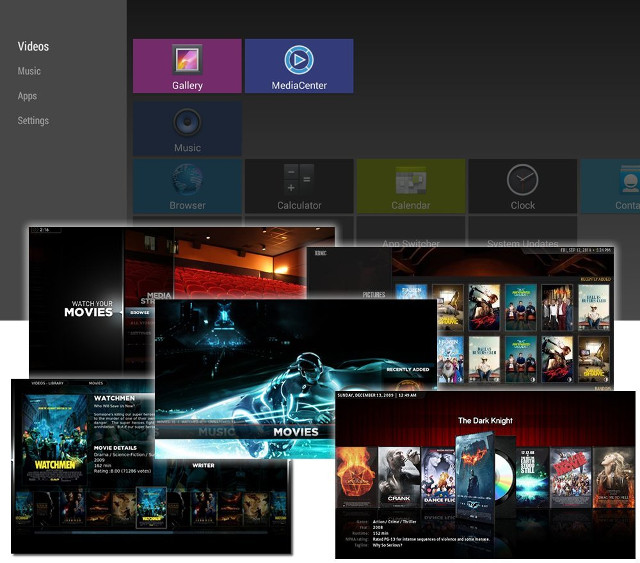Last year, I reviewed Matricom GBox Midnight MX2, and at the time It was the best Android media player I had tested. The company has now launched a new Android media player called G-Box Q with an Amlogic S802 processor, 2 GB RAM, 16 GB eMMC, Ethernet and 802.11ac Wi-Fi. The box will also feature HyperStream, a P2P video streaming technology providing a “more reliable and faster transmission of on-demand and streaming video data”.
![]() Matricom G-Box Q specifications:
Matricom G-Box Q specifications:
- SoC – Amlogic S802 quad core ARM Cortex A9r4 at 2.0GHz with ARM Mali-450MP6 GPU
- System Memory – 2G DDR3
- Storage – 16 GB internal storage + micro SD card slot up to 64GB
- Video Output – HDMI 1.4 up to 4K30, AV port
- Audio Output – HDMI, AV, optical S/PDIF
- Connectivity – 10/100M Ethernet, dual band Wi-Fi 802.11 a/b/g/n/ac, Bluetooth 4.0
- USB – 2x USB 2.0 host ports
- Misc – IR Sensor, Power LED (g letter), power button
- Dimensions – 10.16 x 10.16 x3.81 cm
The device runs Android 4.4.4 with the company’s “Matricom Experience Launcher” (MEL), and XBMC/Kodi. Details about HyperStream are scarse, and it’s not clear to which services it will connect.

Matricom launched the product on November 21, and sold all first 1,000 units quickly. Gbox Q is still listed on Amazon ($109), but currently unavailable. At the time of writing there are already four reviews on Amazon, two with 5 stars, and two with 1 star, but one of the one star simply don’t get video output, so he may have received a defective unit. The hardware is based on M8&M9 V1.0 PCB found in Eny / SZTomato M8 box, but they’ve doubled internal storage (16 vs 8 GB), and used a Wi-Fi module that supports 802.11ac, probably AP6335.
More details may be found on Matricom Gbox Q product page.
Via Android PC Review.

Jean-Luc started CNX Software in 2010 as a part-time endeavor, before quitting his job as a software engineering manager, and starting to write daily news, and reviews full time later in 2011.
Support CNX Software! Donate via cryptocurrencies, become a Patron on Patreon, or purchase goods on Amazon or Aliexpress




